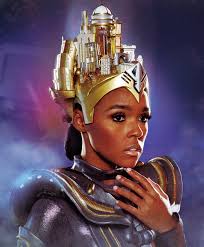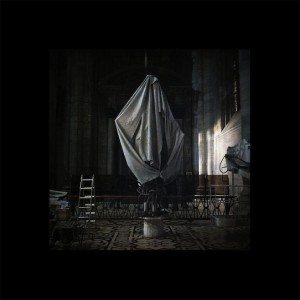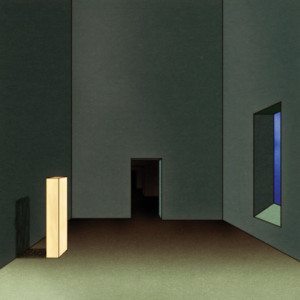I am admittedly a sci-fi nerd. The other day I was reading about jazz musician, performance artist, and Afrofuturist philosopher Sun Ra and his iconic work Space Is the Place.
It got me thinking about the fact that futurism has continued to find its way into fashion and aesthetic concepts, from Jean Paul Gaultier’s costume design for The Fifth Element to singer Janelle Monae’s Metropolis cycle.
Something about the distant future inspires us to imagine new possibilities and make bolder aesthetic choices. When I was researching for my performance piece about an extra-dimensional traveler, Arken: Searching for Wonder, I sought out images of futuristic fashion for inspiration. Here are a few images and designers that excite my mind.
This editorial from Numéro Homme called “Manhattan Psycho” effortlessly merges classic style with a sci-fi sensibility.
Coco and Breezy’s entire line of edgy accessories has futuristic overtones, but its “20/20” campaign is all about what accessorizing will mean in the future: “‘Planet C &&B’ is a world that consists only of fresh air and extreme sunlight where normal eyes cannot stand to view without being covered.”
Kay Kwok presented some out-of-this-world design concepts at his FW14 fashion week show in London. I don’t know if I’d wear this stuff on a regular trip to the grocery store, but I wouldn’t mind owning one of those visors, and I’m sure I’d cause a splash if I received dinner guests in that ET two-piece.
Lee Roach’s line has a much more subtle sci-fi flavor as he makes use of shiny materials and contemplates how our evolution will result in more streamlined fashion, by eliminating collars and lapels, for example.
Nasir Mazhar‘s FW14 collection updates men’s sportswear by exploring geometric shapes, distorted lines, quirky accessories, and shiny space suit sheen.
In the “Warriors” editorial, Holly Fox-Lee imagines how modern-day hip hop style might evolve, fusing it with an ancestral tribal aesthetic and taking it to extremes in terms of shape, scale, and materials.
This editorial called “The Visitors” in G7 magazine features my buddy Ulrico Eguizábal, who I met while I was modeling in Argentina. Not only does it use the concept of alien “visitors” to play with size and shape, but it also imagines a future style that challenges our current gender norms in fashion (thank goodness), using elements typically associated with femininity, like shoulder pads and long flowing fabrics, to highlight the male form in a fascinating new way.
Some of my favorite futuristic designs (and the ones I’d be most likely to wear in day-to-day life) come from Skingraft, which makes nuanced use of a lot of the earlier-mentioned elements, geometric shapes, extraterrestrial mystique, and interesting combinations of materials.
Finally, INAISCE is one of my personal favorite designers right now, in part because it incorporates futurism into its larger design concept to create clothing that is arresting, undeniably unique, and totally wearable. Not only do I absolutely love the campaign for Fall/Winter 2013, but I’m also ecstatic to see another tall African model, South Sudan native Ger Duany, take center stage with his beautiful, otherworldly features. Africans unite!

























































